Contribution to the knowledge of Teloganodidae (Ephemeroptera, Ephemerelloidea) of India
- PMID: 36762229
- PMCID: PMC9848721
- DOI: 10.3897/zookeys.1113.85448
Contribution to the knowledge of Teloganodidae (Ephemeroptera, Ephemerelloidea) of India
Abstract
Two new species of Dudgeodes Sartori, 2008 and a new species of Teloganodes Eaton, 1882 are described from India; they are Dudgeodesselvakumari Martynov & Palatov, sp. nov. from Himalayan region (Uttarakhand), Dudgeodesmolinerii Sivaruban, Martynov, Srinivasan, Barathy & Isack, sp. nov., and Teloganodesbarathyae Sivaruban, Martynov, Srinivasan & Isack, sp. nov. from the Tamil Nadu part of the Western Ghats. Thus, for now, the Teloganodidae fauna of India includes 11 species. Dudgeodesselvakumari sp. nov. appears to be significantly extend northward the known distribution of Dudgeodes. Partial COI sequences were used as an initial clustering method to show the relationships of D.selvakumari sp. nov. with other sequenced operational taxonomic units (OTU) of the genus.
Keywords: COI; Pannota; Tamil Nadu; Uttarakhand; distribution; imago; larva; morphology.
Alexander V. Martynov, T. Sivaruban, Dmitry M. Palatov, Pandiarajan Srinivasan, S. Barathy, Rajasekaran Isack, Michel Sartori.
Figures
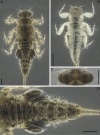
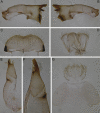
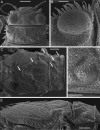
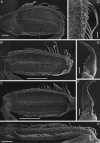
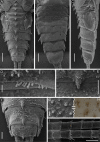

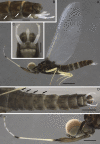


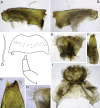
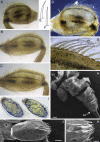

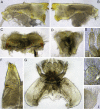

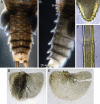

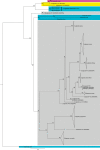
References
-
- Anbalagan S, Balachandran C, Kannan M, Dinakaran S, Krishnan M. (2015) First record and a new species description of Dudgeodes (Ephemeroptera: Teloganodidae) from South India. Turkish Journal of Zoology 39(2): 308–313. 10.3906/zoo-1401-74 - DOI
-
- Folmer O, Black M, Hoeh W, Lutz R, Vrijenhoek R. (1994) DNA primers for amplification of mitochondrial cytochrome c oxidase subunit I from diverse metazoan invertebrates. Molecular Marine Biology and Biotechnology 3(5): 294–299. - PubMed
-
- Garces JM, Sartori M, Freitag H. (2020) Integrative taxonomy of the genus Dudgeodes Sartori, 2008 (Insecta, Ephemeroptera, Teloganodidae) from the Philippines with description of new species and supplementary descriptions of Southeast Asian species. ZooKeys 910: 93–129. 10.3897/zookeys.910.48659 - DOI - PMC - PubMed
LinkOut - more resources
Full Text Sources
